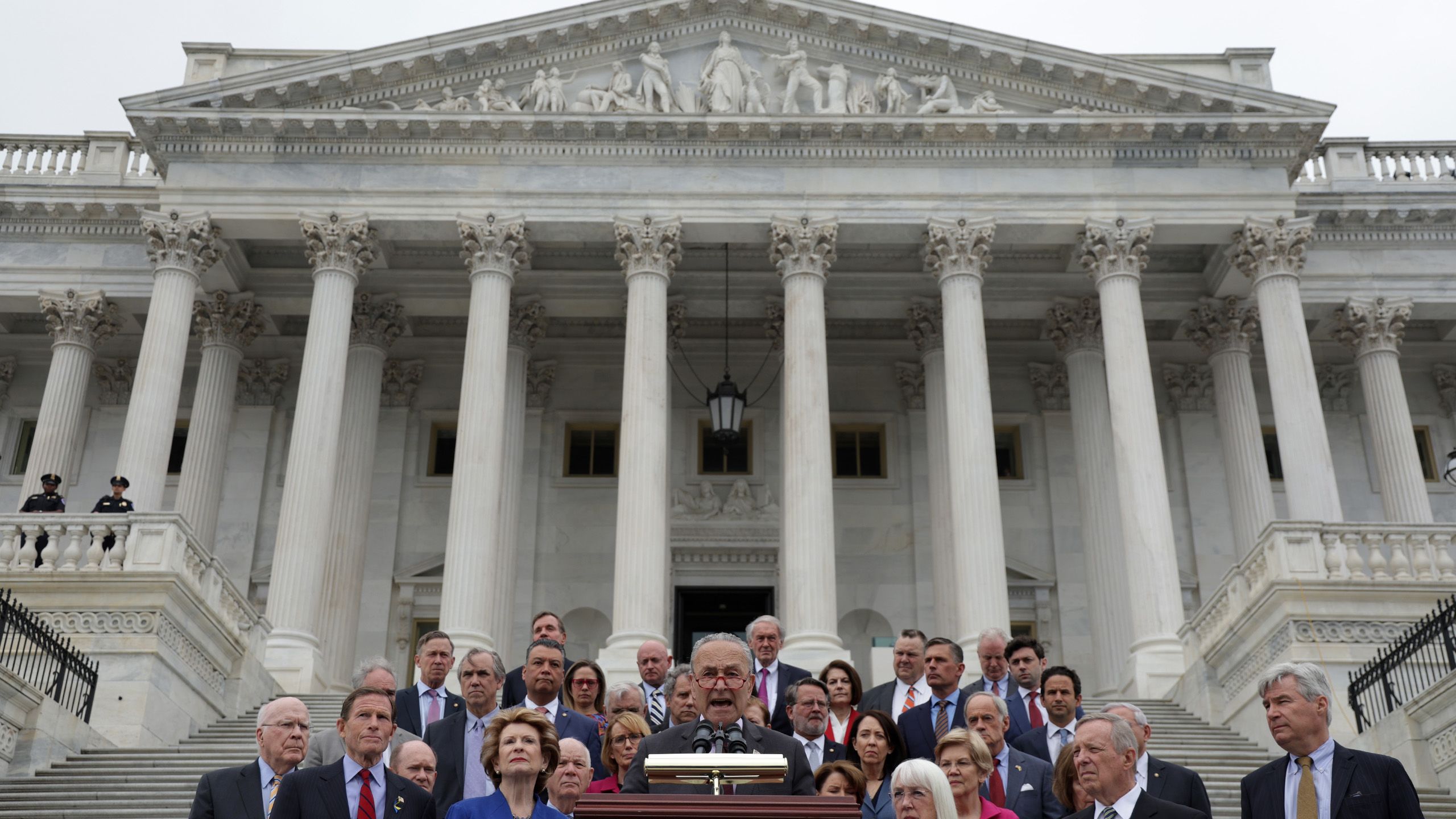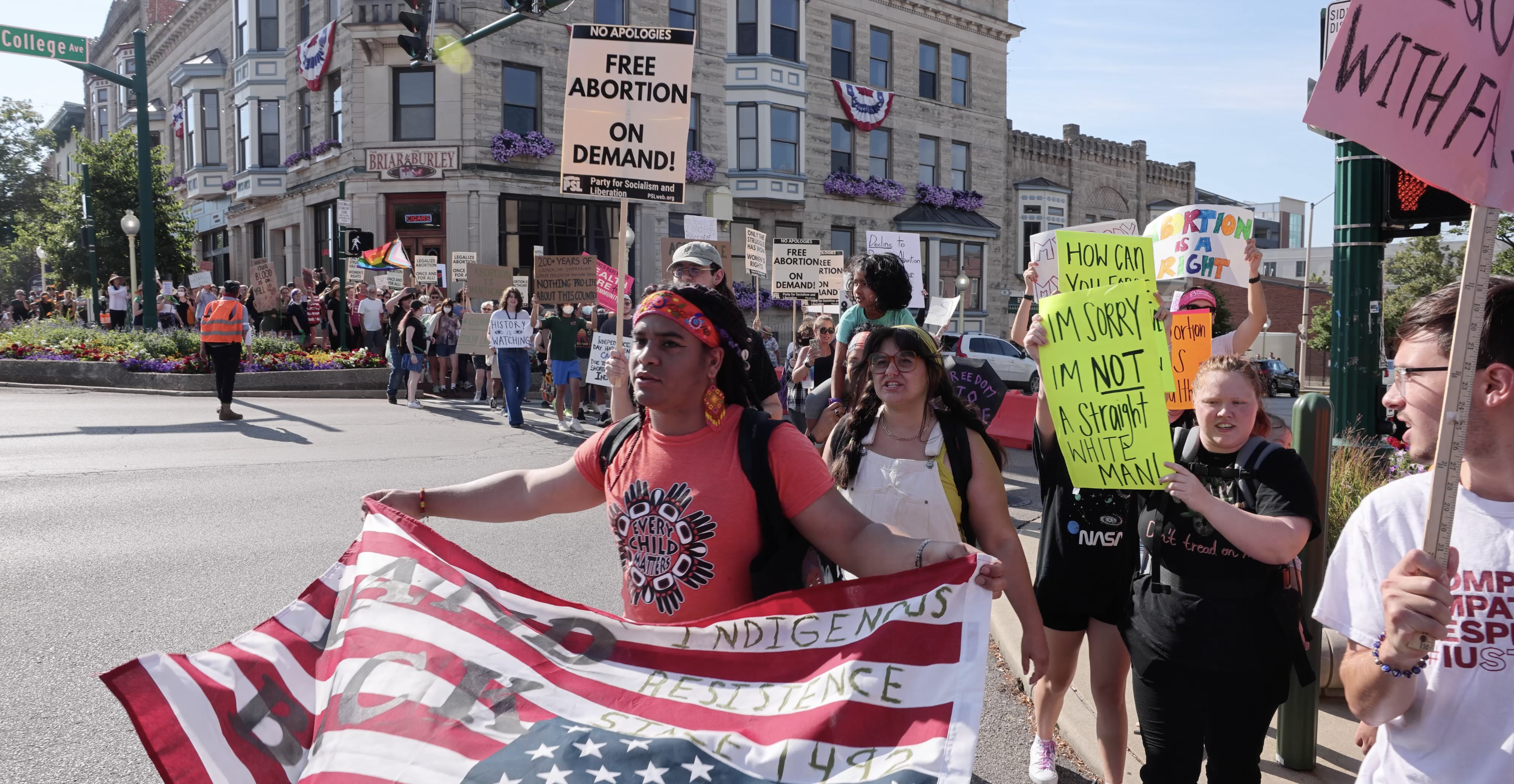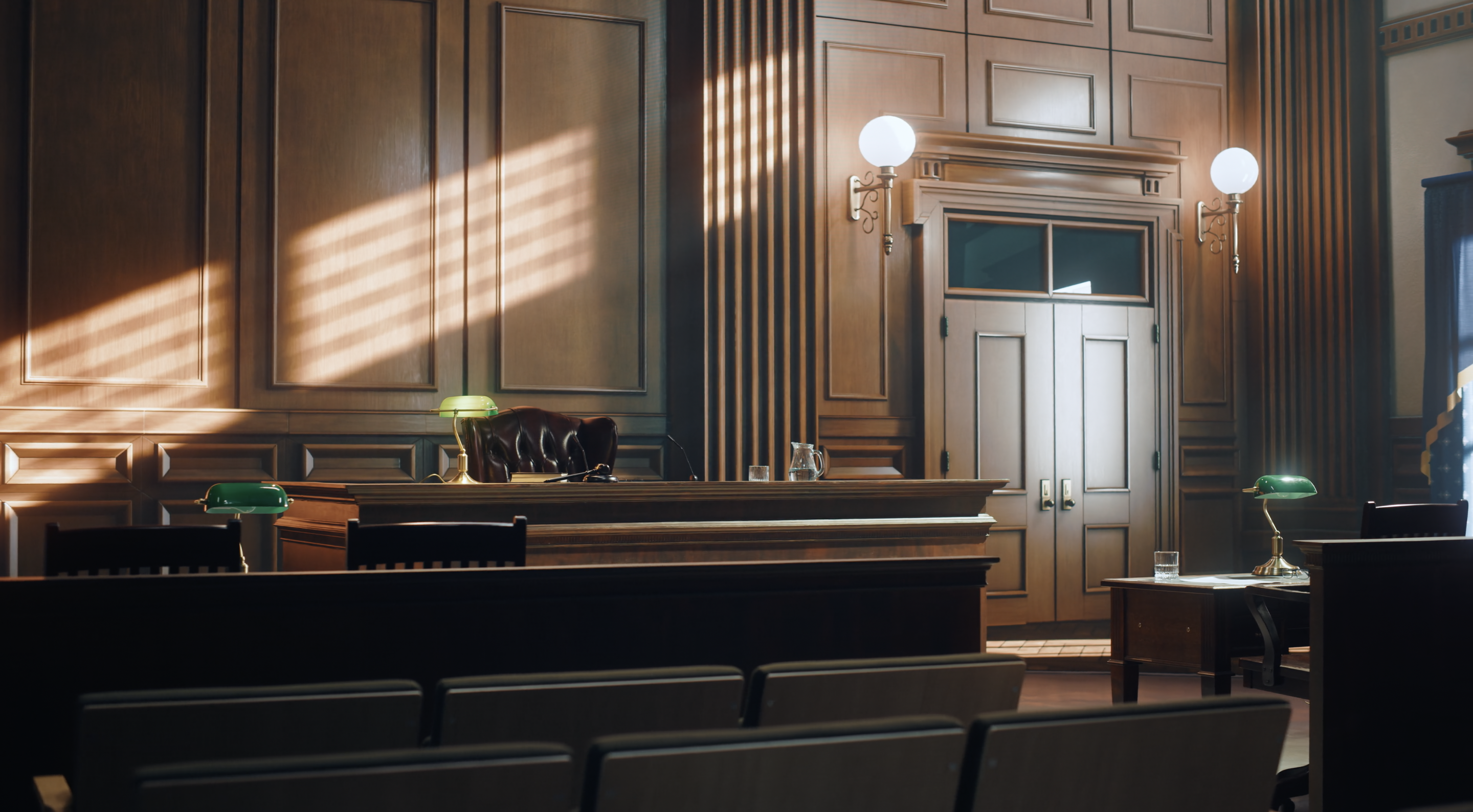Supreme Influence
The High Court in Modern America
By Dustin Petzold

When a U.S. Supreme Court draft majority opinion striking down abortion rights was leaked in May 2022, Professor Leonore Carpenter of Rutgers School of Law in Camden didn’t panic.
“I presumed it was [Justice Samuel] Alito’s wish list,” Carpenter said. She’d fully expected the justices to redefine a fetus’ viability and shorten the time for getting an abortion in Dobbs v. Jackson Women's Health Organization. Instead, the six-justice conservative supermajority last June overturned the landmark 1973 Roe v. Wade.
“Overnight, they erased a 50-year-old precedent—and the right to abortion it created. I tend not to be an alarmist when it comes to what the Supreme Court will do, but now, I’m alarmed.”

Professor Leonore Carpenter, Rutgers School of Law in Camden
Professor Leonore Carpenter, Rutgers School of Law in Camden
The nation’s eyes are on the highly partisan Supreme Court, in the midst of its second term. Since October, the court has heard cases that could alter elections, discrimination protections, affirmative action, environmental oversight, Native American law, and immigration enforcement. Carpenter and Rutgers School of Law colleagues Joanne Gottesman, Stacy Hawkins and Margaret Zhang weighed in on recent and pending rulings as well as the highest court’s polarizing influence.
“This is the most activist court in a generation or more. Unlike the court of the civil rights era, the current Supreme Court is rolling back basic civil rights. This kind of regressive movement is very dangerous.”
–Stacy Hawkins, vice dean
“We’re seeing a conservative court use power to shape law the way they see fit—they are essentially making policy."
–Margaret Zhang, assistant professor
“People are expressing distrust in the Supreme Court and elections. Where will that lead?”
–Joanne Gottesman, Immigrant Justice Clinic director and clinical professor of law
Elections
At stake in Moore v. Harper is the right to legally challenge a state legislature’s actions affecting elections, Hawkins said. The Republican-led North Carolina Legislature is using what’s known as the independent state legislature theory to argue that the state’s Supreme Court lacked authority in rejecting a new congressional map the Legislature adopted. The case could have serious repercussions for checks on state legislatures, threatening state courts’ role in preserving voting and electoral rights, Hawkins said.

Voting rights activists rally outside the U.S. Supreme Court during oral arguments in the Moore v. Harper case December 7, 2022 in Washington, DC. (Photo by Drew Angerer/Getty Images)
Voting rights activists rally outside the U.S. Supreme Court during oral arguments in the Moore v. Harper case December 7, 2022 in Washington, DC. (Photo by Drew Angerer/Getty Images)
Immigration
Gottesman said she is closely following a challenge to the executive branch’s exercise of prosecutorial discretion. In United States v. Texas & Louisiana, the states oppose the Biden administration’s 2021 guidelines for immigration enforcement—prioritizing removal of noncitizens who pose a threat to national security, public safety or border security. “This use of discretion in immigration goes back centuries,” Gottesman said. “The notion that an administration would not be allowed to set priorities for enforcement is hard to imagine.”

A U.S. Border Patrol agent instructs immigrant families as they prepare to board transport to a processing center after crossing the U.S.-Mexico border on August 13, 2021 in La Joya, Texas. (Photo by John Moore/Getty Images)
A U.S. Border Patrol agent instructs immigrant families as they prepare to board transport to a processing center after crossing the U.S.-Mexico border on August 13, 2021 in La Joya, Texas. (Photo by John Moore/Getty Images)

Affirmative Action/Race
The court could take two routes in the cases challenging race as a factor in college admissions decision-making: barring its use, or going farther and rejecting diversity as a compelling interest, Hawkins explained.
She expects the court to take the narrower option. Nine states already exclude race in college admissions decision-making. “We can live in that world and still pursue our goals of diversity,” Hawkins said. However, if the court were to reject diversity, that would have widespread ramifications, including in the workplace, she said. “I’m not sure how we all shift gears into that framework.”

Proponents for affirmative action in higher education rally in front of the U.S. Supreme Court on October 31, 2022 in Washington, DC. The Court will hear arguments in two cases, Students for Fair Admissions v. President and Fellows of Harvard College and Students for Fair Admissions v. University of North Carolina, regarding the consideration of race as one factor in college admission at the two elite universities, which will have an effect on most institutions of higher education in the United States. (Photo by Chip Somodevilla/Getty Images)
Proponents for affirmative action in higher education rally in front of the U.S. Supreme Court on October 31, 2022 in Washington, DC. The Court will hear arguments in two cases, Students for Fair Admissions v. President and Fellows of Harvard College and Students for Fair Admissions v. University of North Carolina, regarding the consideration of race as one factor in college admission at the two elite universities, which will have an effect on most institutions of higher education in the United States. (Photo by Chip Somodevilla/Getty Images)
Brackeen v. Haaland has the potential to undue the 1978 Indian Child Welfare Act, established to keep Native American children in child welfare and adoption cases with their family or tribe. Opponents contend the law is race-based and in violation of the 14th Amendment’s equal protection clause, but tribal citizenship has historically been viewed as a political affiliation. The case “could completely upend our Indian laws,” Hawkins said.

Discrimination/LGBTQ Rights
Zhang is watching 303 Creative v. Elenis, which challenges Colorado’s anti-discrimination statute. The case involves a Christian website designer’s refusal to create wedding websites for same-sex couples. The designer contends a violation of her First Amendment right of free speech.

Supporters of web designer Lorie Smith and counter-protesters demonstrate in front of the U.S. Supreme Court Building on December 05, 2022 in Washington, DC. (Photo by Anna Moneymaker/Getty Images)
Supporters of web designer Lorie Smith and counter-protesters demonstrate in front of the U.S. Supreme Court Building on December 05, 2022 in Washington, DC. (Photo by Anna Moneymaker/Getty Images)
In a case last term, Cummings v. Premier Rehab Keller, P.L.L.C., the court ruled people whose rights are violated under the Affordable Care Act or the Rehabilitation Act cannot seek damages for emotional distress—often the main harm of discrimination, Zhang said. The majority opinion’s rationale relates to the acts’ status as spending clause statutes, those in which recipients of federal monies must adhere to prescribed conditions. “They used a technical, small holding to make it more difficult for people trying to vindicate their civil rights to do so,” said Zhang, an equity and inclusion fellow at Rutgers Law School.
Environment
In its first term, the 6-3 conservative court limited the Environmental Protection Agency’s ability to regulate power plant emissions under the Clean Air Act, hindering climate change initiatives. This term, in Sackett v. EPA, justices are considering limiting federal protection of wetlands and streams. The case involves an Idaho couple blocked from building a home because the EPA contends their property contains wetlands and is subject to regulation under the Clean Water Act.
Over the past five decades, the Clean Water Act and the Clean Air Act significantly reduced pollution. “Reversing these protections is altering our future in ways that cannot be undone,” Hawkins said.

EPA Offices, Washington, D.C.
EPA Offices, Washington, D.C.

Eroding Trust
“This is a fearlessly ideology-driven court, willing to upend rights people have had for generations,” Carpenter said. Bucking precedent and taking positions “out of step with prevailing attitudes of Americans” are destabilizing the country, she said. “We’re seeing it create chaos.”
Zhang said courts’ credibility suffers when litigants anticipate rulings will be based on ideology and not the facts of their case. “People need to know that they have a fair shot at justice,” she said. Faith in the court has eroded. A Gallup poll last fall put the Supreme Court’s job approval at only 40 percent, and trust in the institution was at an all-time low.
Historically, the court “is never too far ahead of or too far behind public sentiment,” Hawkins noted. She pointed to two unanimous landmark decisions, one in 1967 that struck down laws banning interracial marriage, and the other in 2015 that guarantees same-sex couples the right to wed. In both cases, the law in most states had already achieved the same effect.

U.S. Supreme Court Chief Justice John Roberts (L) speaks with retiring Justice Stephen Breyer at the State of the Union address by President Joe Biden to a joint session of Congress in the U.S. Capitol House Chamber on March 1, 2022 in Washington, DC.
U.S. Supreme Court Chief Justice John Roberts (L) speaks with retiring Justice Stephen Breyer at the State of the Union address by President Joe Biden to a joint session of Congress in the U.S. Capitol House Chamber on March 1, 2022 in Washington, DC.
Retooling the Court
The Rutgers School of Law professors agreed justices at a minimum should be bound by an ethics code, just as all other federal judges are. Supreme Court justices nominated by both parties have had ethical lapses, Zhang noted.
Retooling of the Supreme Court is needed, but that’s far more complicated.
"The Supreme Court has been turned into a political institution that gets to decide winners and losers. There has to be a mechanism for rebalancing the parties’ influence on the court. You don’t want ideological capture of the court.”
Such a fix would likely involve term limits for justices and allowing each president to make a certain number of appointments. But establishing such a system would require support of both major parties. “Without bipartisan buy-in, then you wind up looking like this is political payback,” Carpenter said. “That doesn’t help any institution’s credibility.”
The Supreme Court will likely hand down most of this term’s rulings by mid-June.
“We're going to see decisions that make conservatives happy and progressives unhappy, but I think there may be some surprises,” Carpenter said.


Creative Design: Karaamat Abdullah
Photography: Ron Downes Jr.